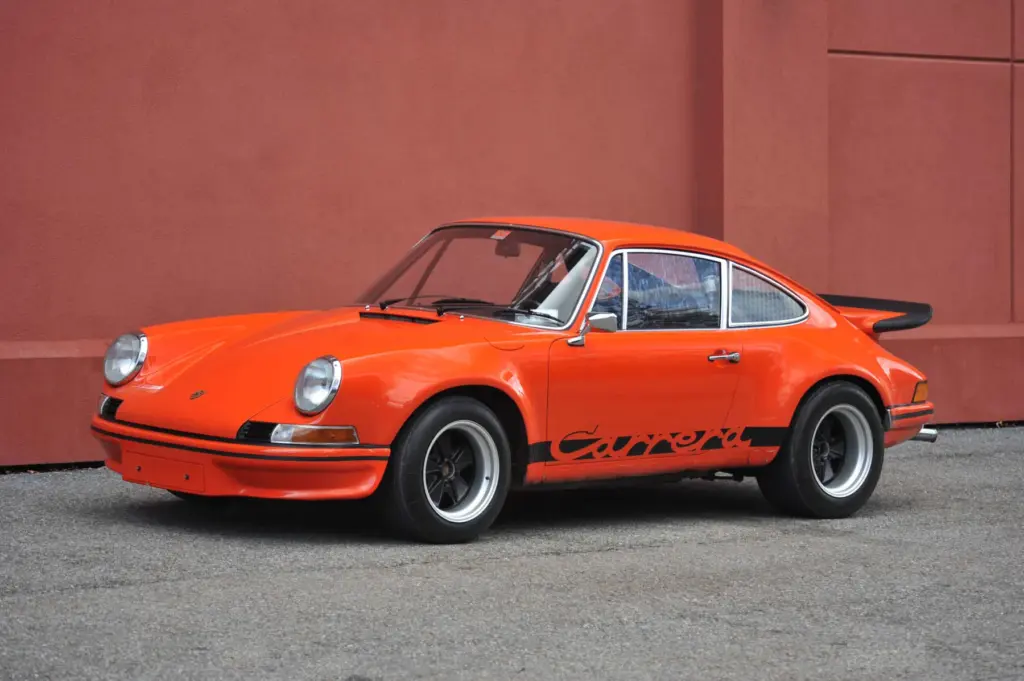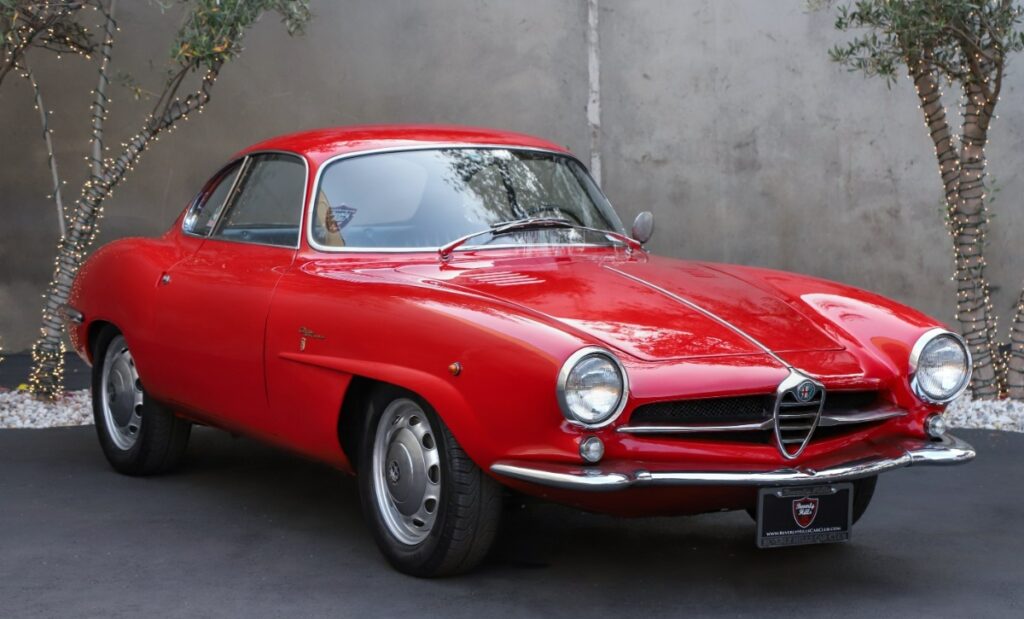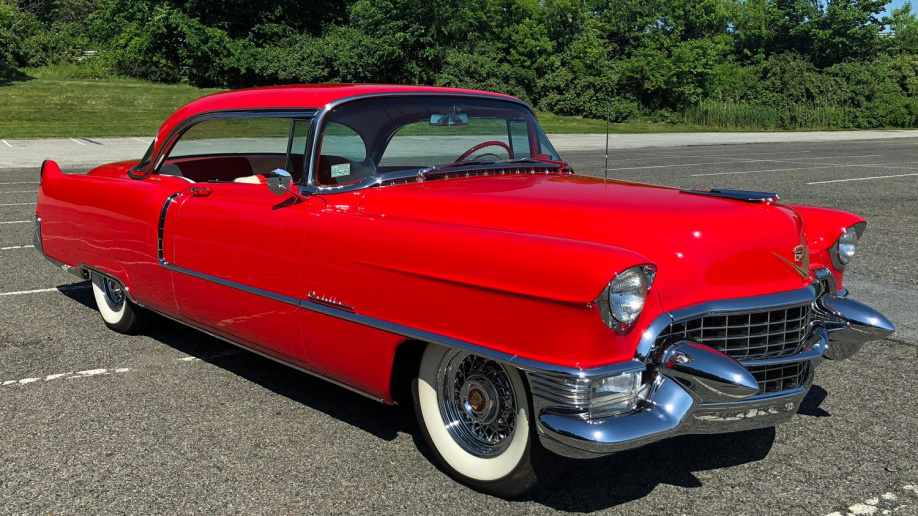Complete Guide to the World of Classic Cars: From insurance and restoration to events and sales. A passionate journey through the world of historic motorsports for enthusiasts and collectors.
Since I was a child, classic cars have been my passion.
There's something magical about those curved lines, the rumbling sound of a 1960s V8 engine, or the perfect shine of carefully restored chrome.
Every vehicle tells a story, every model represents an era, and every restoration is an act of historic preservation.
Throughout my life, I've been fortunate enough to immerse myself in this fascinating universe, learning every detail, every secret, and every challenge surrounding these treasures on wheels.
Today I want to share with you everything I've learned on this journey.
From selecting the perfect model to the secrets of restoration, from specialized insurance protection to participating in events where these vehicles shine.
This text is my gift to you, classic car lover or aspiring classic car enthusiast. A comprehensive guide to help you navigate the sometimes turbulent waters of classic car collecting and preservation.
Insurance: specialized protection for rolling treasures
When I acquired my first classic, a 1973 Porsche 911, I made the mistake that many newbies make: insure it with a standard policy.

1973 Porsche 911
Three months later, a small incident made me realize the importance of having specialized insurance for classic vehicles.
Classic car insurance differs significantly from conventional insurance.
First, they're based on the agreed-upon value of the vehicle, not its depreciation. This means that if you suffer a total loss, you'll receive the full, pre-agreed value, not what an appraiser deems it worth at the time. When you're restoring a classic and investing thousands of euros, this difference can be crucial.
In addition, classic car policies typically offer lower premiums.
Why? Because insurance companies understand that we owners of these vehicles are extremely careful.
We don't use them to commute to work every day, we don't expose them to the risks of everyday traffic, and we store them in optimal conditions.
Another key aspect is coverage during transportation and at events. If you plan to take your classic car to an exhibition in another city, you'll need coverage during that trip. If you participate in rallies or gatherings, it's essential to ensure your policy covers these activities.
My recommendation is always to work with insurance companies that specialize in classic vehicles.
Companies like Classic Insurance, Historic Insurance either Vintage Car Insurance They have teams of appraisers who truly understand the value and uniqueness of these cars.
In addition, they often offer additional services such as specialized roadside assistance, which knows how to handle a historic vehicle, or coverage for original parts.
It's also important to check that your insurance policy covers the cost of the restoration. If you just spent €15,000 restoring the engine of your Mercedes 280SL, make sure that value is reflected in your insurance.
Regularly update your vehicle's appraisal, especially after major restorations.
Finally, don't neglect liability coverage. Even if you drive your classic car with extreme care, accidents happen. Good liability coverage will protect you against any eventuality.
See more texts about insurance here.
Restoration: the art of bringing life back
Restoring a classic car is, without a doubt, one of the most rewarding and challenging processes I've ever experienced. It's a journey that combines historical research, technical skill, endless patience, and, why not say it, a healthy dose of stubbornness.
My first full restoration was a 1962 Alfa Romeo Giulietta Sprint.

1962 Alfa Romeo Giulietta Sprint
When I acquired it, it was little more than a rusty skeleton. Three years later, that same car won the award for best restoration at the Barcelona Concours d'Elegance. The process taught me invaluable lessons that I want to share with you.
Before beginning any restoration, you must make a fundamental decision: original restoration or restomod? An original restoration seeks to return the vehicle to its factory condition, using period-specific parts and techniques. A restomod, on the other hand, maintains the classic appearance but incorporates modern improvements, such as updated braking systems or comfort technology.
Whatever your choice, documentation is crucial. Gather all the original manuals, parts catalogs, vintage photographs, and any other documents that might guide you. Join model owners' clubs; the collective wisdom of these groups is invaluable.
For bodywork restoration, I always recommend starting with an honest assessment of the metal's condition. Rust is enemy number one and is often hidden under layers of filler and paint. Don't be afraid to strip everything down to the bare metal. It's better to face reality from the start than to discover hidden problems later.
Engine rebuilding is another fascinating chapter. If you're lucky enough to have the original engine, consider restoring it even if it seems impossible. An original engine with the matching serial number significantly increases the vehicle's value. If you need a new one, look for specialists who are familiar with that specific model.
The interior deserves special attention. The upholstery, the dashboard, the instruments... every detail counts. There are artisans specialized in recreating classic interiors with original materials and techniques. Don't skimp on this aspect; an impeccable interior is what truly makes a restored classic stand out.
As for the paint, my advice is to always opt for the model's original colors. While a red Ferrari will always be beautiful, a Ferrari in its original catalog color can be even more valuable. Research the exact color codes and find a shop that specializes in classic car paint.
Restoration is a long and expensive process. Set a realistic budget and allow for unforeseen expenses. Plan each step and don't rush. Remember, you're creating something that will last for decades.
See more texts on restoration here.
Personalization: between tradition and personal expression
Customizing classic cars generates passionate debate in the collecting world.
On the one hand, purists advocate the absolute preservation of originality. On the other, there are those who see their vehicles as canvases for personal expression.

I fall somewhere in the middle: I deeply respect the story and the original design, but I understand the desire to add personal touches.
If you decide to customize your classic, I recommend following a few guidelines to avoid compromising its historical value. First, keep all the original parts you replace. If you ever decide to return to original condition or sell the vehicle, having these parts will be invaluable.
Subtle customizations are often the most successful. A discreetly integrated sound system, safety enhancements, or small aesthetic touches that reflect the era can enrich the experience without altering the vehicle's essence.
One trend I've seen growing in recent years is the electrification of classic cars. Companies like Electric Classic Cars are transforming iconic models, installing electric motors that maintain the spirit of the car but eliminate reliability and emissions concerns. It's a controversial but fascinating option for those looking to use their classic cars in areas with environmental restrictions.
The movement «Outlaw», popularized mainly with the Classic Porsche 911s, is another interesting example. These vehicles maintain their recognizable silhouette but incorporate modifications such as flared fenders, boosted engines, and modernized interiors. It's a contemporary interpretation of the original sporty spirit.
My advice is always to personalize with respect. Study the model's history, understand its defining characteristics, and make sure any modifications enhance, not diminish, its special character.
See more texts about customization here.
Maintenance: the secret to longevity
Owning a classic car comes with a responsibility: keeping it in the best possible condition. Regular maintenance not only ensures your vehicle remains operational but also preserves its long-term value.
Unlike modern cars, classic cars require constant attention even when not in use. In fact, one of the biggest mistakes I've seen people make is leaving a classic car sitting idle for months. Fluids deteriorate, seals dry out, rodents can damage the wiring... My rule of thumb is to start the engine at least once a month and take it for a short drive if possible.
Preventative maintenance is crucial. Establish a rigorous schedule for oil changes, brake checks, fluid monitoring, and mechanical adjustments. The intervals will differ from those of a modern car; always consult the original owner's manual or seek expert advice.
One of the peculiarities of classic cars is the need for manual lubrication of certain parts. Items like the suspension ball joints, pedal bushings, and door hinges require grease periodically. Create a checklist and don't overlook any item.
Proper storage is vital. Ideally, your classic should reside in a dry garage with a constant temperature and good ventilation. If this isn't possible, at least consider a high-quality cover specific to your model. Humidity is particularly damaging; a dehumidifier can be an excellent investment.
Tires deserve special attention. Even when you're not using your car, they age and can develop dangerous cracks. Check them regularly and consider replacing them every 5-7 years, regardless of wear.
The battery is another critical point. A battery charger/maintainer is essential for those who don't use their classic car frequently. These devices keep the battery in optimal condition without overcharging it.
When it comes to rust, prevention is key. Regularly inspect the underbody, wheel arches, and other rust-prone areas. Modern anti-corrosion products can be applied to hidden areas to provide long-lasting protection.
Finally, create and maintain a detailed record of all maintenance performed. This history will not only help you follow a consistent schedule, but will also add value if you ever decide to sell the vehicle.
See more maintenance texts here.
History: Understanding the Legacy
Every classic car is a chapter in automotive history, a testament to the design, engineering, and culture of its era. Understanding this history greatly enriches the experience of owning a classic.
My fascination with history began with a Citroën DS I inherited from my grandfather. Researching this model, I discovered that it was not only a technical marvel with its revolutionary hydraulic system, but that it had also played a role in significant historical moments, such as the assassination of Charles de Gaulle in 1962, where the DS's hydraulic suspension saved the French president's life.
For any classic model, I recommend researching its historical context: What world events were occurring when it was designed? What technological innovations did it incorporate? Who were its designers and engineers? What impact did it have on the society of its time?
The great classics often reflect the culture and values of their time. The finned Cadillac of the 1950s represented the optimism and opulence of postwar America.

The original Mini embodied the cultural revolution and democratization of the automobile in 1960s England. The Porsche 911 symbolized German precision and the evolution of sports cars into the modern era.
In addition to the general history of the model, each individual vehicle has its own biography. Tracing the history of your own classic can be a fascinating adventure. Find previous owners, research where the car has lived, and what restorations it has undergone. Occasionally, I've uncovered surprising stories; a Ferrari 250 GT that belonged to a famous film director, a Jaguar E-Type that participated in underground rallies in the 1970s...
History also includes the technical evolution of the automobile. Understanding how carburetor systems gave way to fuel injection, how safety systems were developed, and how the materials used in manufacturing evolved will give you a deeper perspective on your vehicle.
Finally, don't forget that you, too, are writing a chapter in that car's history. The way you maintain it, the adventures you take on with it, the restorations you undertake... all of this will be part of its legacy for future enthusiasts.
See more texts on history here.
The Events: Celebrating Shared Passion
Classic car events are much more than just exhibitions; they are celebrations of a shared passion, opportunities to learn, socialize, and enjoy these moving gems.
My first important event was the Historic Monte Carlo Rally in 2005. Participate with my Alpine A110 Among the snowy roads of the Alps, surrounded by other enthusiasts and their magnificent vehicles, it was a transformative experience.

Alpine A110
Since then, I have attended dozens of events around the world, each with its own character and charm.
Elegance competitions represent the pinnacle of exclusivity in the world of classics. Events like the Villa d'Este Concours d'Elegance in Italy or Pebble Beach in California bring together the rarest and most valuable examples on the planet. Attending one of these events, even as a spectator, is a masterclass in automotive history and design.
Historic rallies offer a completely different experience. Here, cars are used as they were designed: for driving. Events like the Mille Miglia in Italy, the Tour Auto in France, or the Carrera Panamericana in Mexico combine the pleasure of driving with immersion in spectacular scenery and camaraderie among participants.
Local gatherings, more accessible and relaxed, are equally valuable.Almost every city has its own classic car club that organizes Sunday outings or monthly meet-ups. These events are perfect for beginners; the atmosphere is friendly, and the owners are usually happy to share tips and experiences.
Classic car fairs, such as Techno Classica in Essen or Retromobile in Paris, are paradise for enthusiasts. Here you'll find everything from the most exclusive models to rare pieces you've been searching for for years. They're also excellent opportunities to network with restorers, suppliers, and other enthusiasts.
If you decide to participate in events with your classic, there are some important considerations. First, make sure your vehicle is in optimal condition, especially if you plan to drive long distances. Second, verify that your insurance covers participation in these events. Third, be adequately prepared with basic tools, essential spare parts, and complete documentation.
The events are also exceptional educational opportunities. Conferences, workshops, and technical demonstrations can help you expand your knowledge. Never stop learning; even after decades in this industry, I continue to discover new details at every event.
Buying and Selling: Navigating the Market Wisely
The classic car market can be tricky territory for novices.It combines the rationality of a financial investment with the passion of a collector and the technical complexity of a vintage vehicle. After decades of buying and selling classics, I've learned a few lessons that can help you navigate these waters.
For buyers, my first piece of advice is always: buy with your heart, but verify with your head.Choose a model you're truly passionate about, but be absolutely rigorous in verifying its authenticity and condition.
Before searching for a specific model, educate yourself about it.. Study the variants, changes between production years, common weaknesses, and details that distinguish an exceptional model from an ordinary one. Specialized publications, online forums, and modeling clubs are excellent resources.
Authenticity is paramount. Always check the chassis and engine numbers and make sure they match the documentation. For valuable models, consider hiring an expert for an authenticity inspection. I've seen replicas so convincing they would fool most enthusiasts.
The technical condition requires a professional evaluation. If you don't have the necessary knowledge, take it to a mechanic who specializes in your model. Pay special attention to structural corrosion, engine and transmission condition, and spare parts availability.
Comprehensive documentation adds significant value. Look for vehicles with service history, original owner's manual, restoration invoices, and, if possible, documentation tracing their history back to the factory.
When it comes to negotiating, find out about current market prices, but remember that each vehicle is unique. Factors such as rarity, condition, documentation, history, and authenticity can justify substantial price differences between two seemingly similar specimens.
For sellers, preparation is key. Before putting your classic car up for sale, make sure it's in optimal cosmetic and mechanical condition. Small investments in details like chrome plating, upholstery, or the engine compartment can multiply the final price.
Gather all available documentation. Organize maintenance and restoration invoices chronologically. Prepare a dossier with high-quality photographs, both current and historical if you have them. Include certifications of authenticity or participation in prestigious events.
Choose the right sales channel for your vehicleSpecialized auctions are excellent for rare or valuable items. Online portals specifically for classics have a wide reach. Private sales can maximize your profit but require more effort and caution.
Finally, be patient. Classic cars aren't fast-moving items. Finding the right buyer can take time, but waiting for someone who truly values your vehicle often results in a more satisfying transaction for both parties.
See more articles on buying and selling here.
A journey that never ends
After decades immersed in the exciting world of classic cars, I've learned that this isn't simply a hobby or an investment; it's a continual journey of discovery, learning, and connection.
Every classic car that has passed through my hands has taught me something new.
Each restoration has been a different challenge.
And every rally, every exhibition, every encounter with other enthusiasts has enriched my understanding and appreciation of these magnificent vehicles.
What began as a simple admiration for the beauty of a Jaguar E-Type As a teenager it became a passion that defined much of my life.
I've formed lasting friendships, traveled to incredible places, learned skills I never imagined possible, and experienced the incomparable satisfaction of bringing abandoned vehicles back to life.
If you're just starting out in this world, I encourage you to embrace it with passion but also with patience. Learn from veterans, join clubs, read as much as you can, and above all, enjoy the process.
It's not just about the final destination—a garage full of pristine classics—but the journey: the searches, the discoveries, the challenges overcome, the stories shared.
And always remember that, as custodians of these historic vehicles, we have a responsibility to preserve them for future generations. Every classic car we restore, maintain, and enjoy is a piece of history that will survive thanks to our efforts.
Welcome to this endless adventure. The road is full of curves, some more difficult than others, but the views are incomparable and the company is unbeatable. See you on the road!

Passionate about classic cars for as long as he can remember, Javier Montoro has dedicated his life to the search, restoration, and preservation of true gems on wheels. With years of experience purchasing, restoring, and maintaining vintage vehicles, he shares his knowledge, stories, and lessons learned on this blog.

